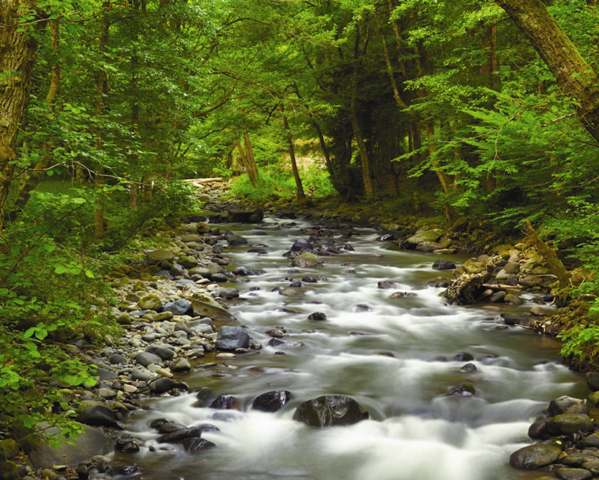Riparian Areas
 Whether your woodlands are home to an occasional stream or a roaring river, your careful stewardship of these riparian areas can make a big difference not only to your bottom line, but also to the quality of the water on which both people and nature depend.
Whether your woodlands are home to an occasional stream or a roaring river, your careful stewardship of these riparian areas can make a big difference not only to your bottom line, but also to the quality of the water on which both people and nature depend.
One of the most important steps in managing your riparian area is to establish a buffer zone, about 25- to 50-feet wide, of native trees, grasses, shrubs and other plants. This buffer zone helps to purify water and regulate stream flow. It also provides food and shelter to a wide variety of animals.
Think about your riparian buffer zone as having three parts: stream- side, inland and outer. Streamside is the most fragile part, and the most important. Encouraging the growth of native plants here helps to stabilize the stream bank, and provides shade and organic material. It also keeps the water cool and provides the protected little pockets that fish and frogs need to lay their eggs. For the inland area, use a mix of trees and shrubs to slow the run-off from roads and trails before it reaches your stream or river. The outer area is the first line of protection for your riparian area, helping to slow runoff and trap sediment.Another crucial step in managing your riparian area is to reduce runoff from roads and trails. About 90 percent of runoff in riparian areas comes from poorly located, designed or maintained roads. Not only does this runoff cloud and degrade the water, but it also robs your wood- lands of nutrients. State forestry best management practices generally provide detailed recommendations for road construction and design to minimize impacts to water resources and riparian areas.
You also need to be careful about how you site and build any potential barriers to water movement, such as bridges and culverts. Bridges and culverts should be planned to handle the expected peak water flow during the life of the structure, not just the existing water level. Place these structures in a straight section of stream that is flat with solid banks and bed (water hits with the greatest force at curves during a rainstorm). Remember that permits are required for most stream crossings.
Famed nature writer Loren Eiseley once said, “If there is magic on this planet, it is contained in water.” Help protect the magic in your woodland by following the best practices for riparian area management.
For more information, visit My Land Plan.
Photo courtesy of © silver -john/SHUTTERSTOCK.COM










I need more information